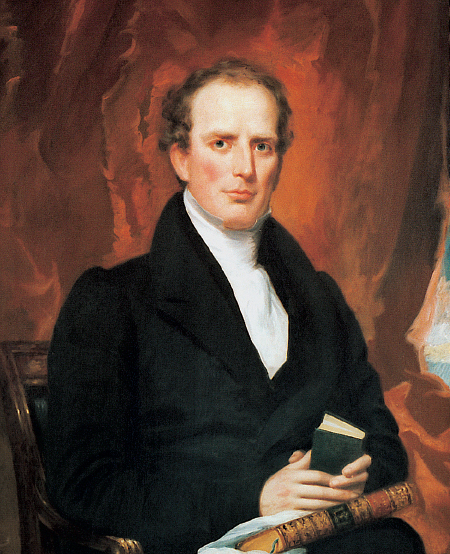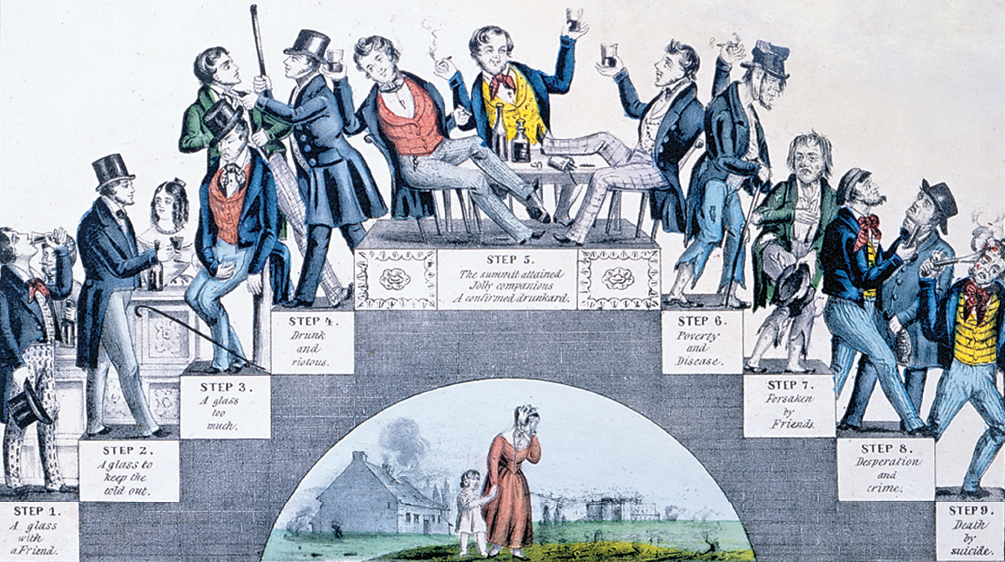Charles Grandison Finney: Revivalism and Reform

Presbyterian minister Charles Grandison Finney found a new way to propagate religious values. Finney was not part of the traditional religious elite. Born into a poor farming family in Connecticut, he had planned to become a lawyer and rise into the middle class. But in 1823, Finney underwent an intense religious experience and chose the ministry as his career. Beginning in towns along the Erie Canal, the young minister conducted emotional revival meetings that stressed conversion rather than doctrine. Repudiating Calvinist beliefs, he preached that God would welcome any sinner who submitted to the Holy Spirit. Finney’s ministry drew on — and greatly accelerated — the Second Great Awakening, the wave of Protestant revivalism that had begun after the Revolution.
Evangelical Beliefs Finney’s central message was that “God has made man a moral free agent” who could choose salvation. This doctrine of free will was particularly attractive to members of the new middle class, who had accepted personal responsibility for their lives, improved their material condition, and welcomed Finney’s assurance that heaven was also within their grasp. But Finney also had great success in converting people at both ends of the social spectrum, from the haughty rich who had placed themselves above God, to the abject poor who seemed lost to drink and sloth. Finney celebrated their common fellowship in Christ and identified them spiritually with pious middle-class respectability.
Finney’s most spectacular triumph came in 1830, when he moved his revivals from small towns to Rochester, New York, now a major milling and commercial city on the Erie Canal. Preaching every day for six months and promoting group prayer meetings in family homes, Finney won over the influential merchants and manufacturers of Rochester. They promised to attend church, give up intoxicating beverages, and work hard. To encourage their employees to do the same, wealthy businessmen founded a Free Presbyterian Church — “free” because members did not have to pay for pew space. Other evangelical Protestants founded churches to serve transient canal laborers, and pious businessmen set up a savings bank to encourage thrift among the working classes. Meanwhile, Finney’s wife, Lydia, and other middle-class women carried the Christian message to the wives of the unconverted, set up Sunday schools for poor children, and formed the Female Charitable Society to assist the unemployed.
Finney’s efforts to create a spiritual Christian community were not completely successful. Skilled workers in strong craft organizations — boot makers, carpenters, stonemasons, and boatbuilders — protested that they needed higher wages and better schools more urgently than sermons and prayers. Poor people ignored Finney’s revival, as did Irish Catholic immigrants, many of whom hated Protestants as religious heretics and political oppressors.
Nonetheless, revivalists from New England to the Midwest copied Finney’s evangelical message and techniques. In New York City, wealthy silk merchants Arthur and Lewis Tappan founded a magazine, The Christian Evangelist, that promoted Finney’s ideas. The revivals swept through Pennsylvania, North Carolina, Tennessee, and Indiana, where, a convert reported, “you could not go upon the street and hear any conversation, except upon religion.” The success of the revivals “has been so general and thorough,” concluded a Presbyterian general assembly, “that the whole customs of society have changed.”
Temperance The temperance movement was the most successful social reform. Beer and rum had long been standard fare in American rituals: patriotic ceremonies, work breaks, barn raisings, and games. Long before the arrival of spirit-drinking Irish and beer-drinking German immigrants, grogshops dotted almost every block in working-class districts and were centers of disorder. During the 1820s and 1830s, alcohol consumption reached new heights, even among the elite; alcoholism killed Daniel Tompkins, vice president under James Monroe, and undermined Henry Clay’s bid for the presidency. Heavy drinking was especially devastating for wage earners, who could ill afford its costs. Although Methodist artisans and ambitious craft workers swore off liquor to protect their work skills, health, and finances, other workers drank heavily on the job — and not just during the traditional 11 A.M. and 4 P.M. “refreshers.” A baker recalled how “one man was stationed at the window to watch, while the rest drank.”

The evangelical Protestants who took over the American Temperance Society in 1832 set out to curb the consumption of alcoholic beverages. The society grew quickly to two thousand chapters and more than 200,000 members. Its nationwide campaign employed revivalist methods — group confession and prayer, using women as spiritual guides, and sudden emotional conversion — and was a stunning success. On one day in New York City in 1841, more than 4,000 people took the temperance “pledge.” The annual consumption of spirits fell dramatically, from an average of 5 gallons per person in 1830 to 2 gallons in 1845.
Evangelical reformers celebrated religion as the key to moral improvement. Laziness and drinking might be cured by self-discipline, as Benjamin Franklin had argued, but religious conversion would ensure a profound change of heart. Religious discipline and the ideology of social mobility thus served as powerful cements, bonding middle-class Americans and wage-earning citizens as they grappled with the economic divisions created by industrialization, market expansion, and increasing cultural diversity.
EXPLAIN CONSEQUENCES